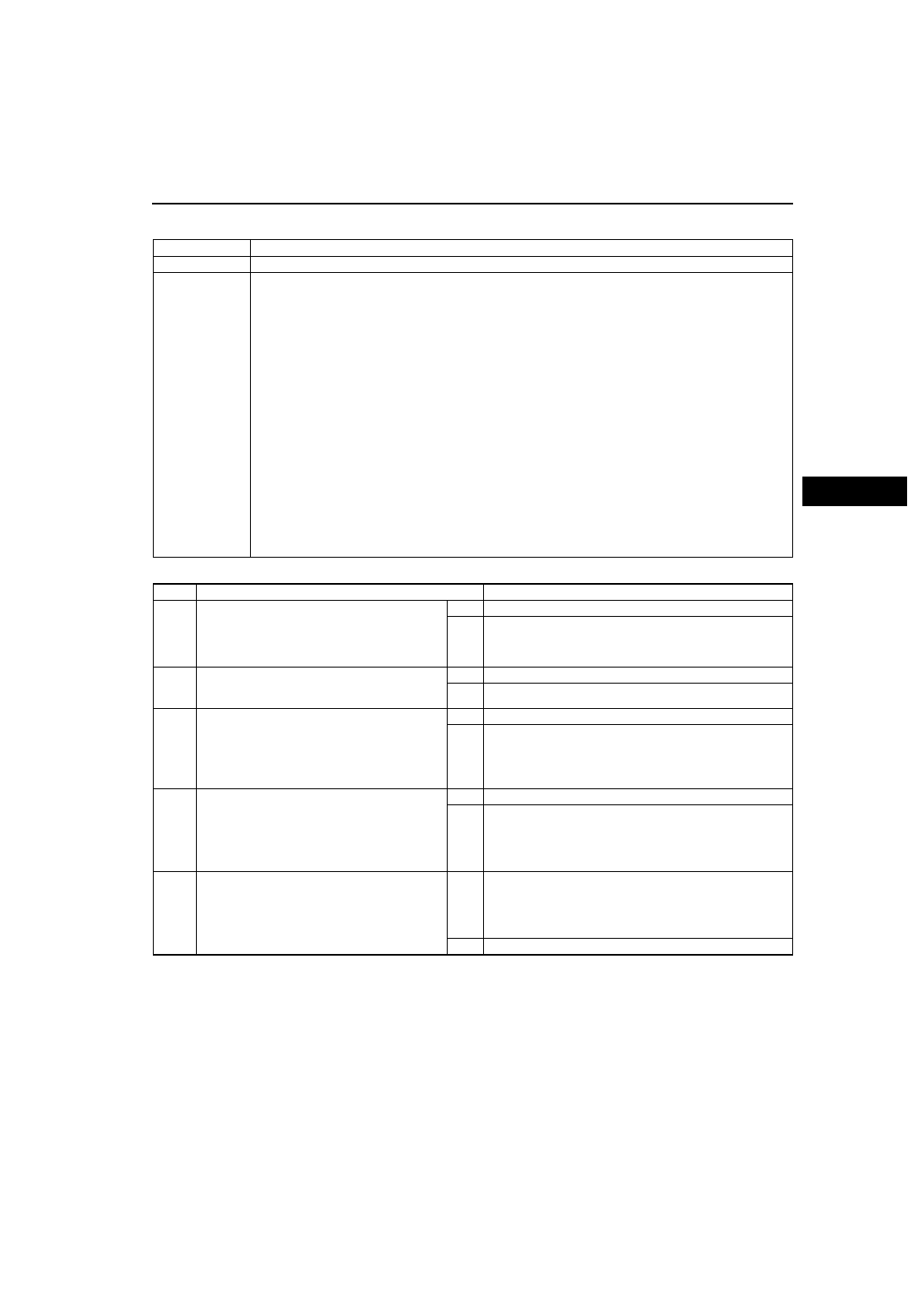Mazda 6. Manual - part 221

TROUBLESHOOTING
K–125
K
NO.16 JUDDER UPON TORQUE CONVERTER CLUTCH (TCC) OPERATION
A6E568001030W20
Diagnostic procedure
End Of Sie
16
Judder upon torque converter clutch (TCC) operation
DESCRIPTION
• Vehicle jolts when TCC is engaged.
POSSIBLE
CAUSE
• Poor TCC engagement due to either slippage because the TCC is stuck or the line pressure is low
Caution
• If the TCC is stuck, inspect it. In addition, inspect the oil cooler for foreign particles which
may have mixed in with the ATF.
1. Torque converter clutch piston slipped, burned
• Line pressure high
• Shift solenoid A malfunction
• Control valve body malfunction
• Body GND malfunction
• Pressure control solenoid malfunction
2. Signal malfunction
• Vehicle speed sensor malfunction
• Sensor GND malfunction
• TFT sensor malfunction
• TP sensor malfunction or mis-adjustment
• Input/turbine speed sensor malfunction
3. Torque converter malfunction
Note
• Before following troubleshooting steps, make sure that Automatic Transaxle On-Board Diagnostic
and Automatic Transaxle Basic Inspection are conducted.
STEP
INSPECTION
ACTION
1
Check the value at the following PIDs using the
WDS or equivalent. (See
• TSS
Are PID values okay?
Yes
Go to next step.
No
Repair or replace any defective parts.
2
Disconnect PCM. Is resistance between ground
terminal at PCM connector and body ground
less than 5.0 ohms?
Yes
Go to next step.
No
Repair open ground circuit.
3
Check resistance between shift solenoid A
control circuit at PCM connector and control
valve body connector. Check resistance
between shift solenoid A circuit at PCM
connector and control valve body connector. Are
the resistance less than 5.0 ohms?
Yes
Go to next step.
No
Repair shift solenoid A circuit.
4
Inspect Shfit solenoid. (See
.) Is the solenoid valve
operating properly?
Yes
Go to next step.
No
Overhaul control valve body and repair or replace any
defective parts. If problem remains, overhaul transaxle and
repair or replace any defective parts. (See ATX workshop
manual (FN4A-EL) [1623-10-98E].) (See ATX workshop
manual supplement (FN4A-EL) [1746-1*-02C].)
5
Check LPS PID value.
Is LPS PID value okay?
(See
Yes
Overhaul control valve body and repair or replace any
defective parts. If problem remains, overhaul transaxle and
repair or replace any defective parts. (See ATX workshop
manual (FN4A-EL) [1623-10-98E].) (See ATX workshop
manual supplement (FN4A-EL) [1746-1*-02C].)
No
Replace PCM.